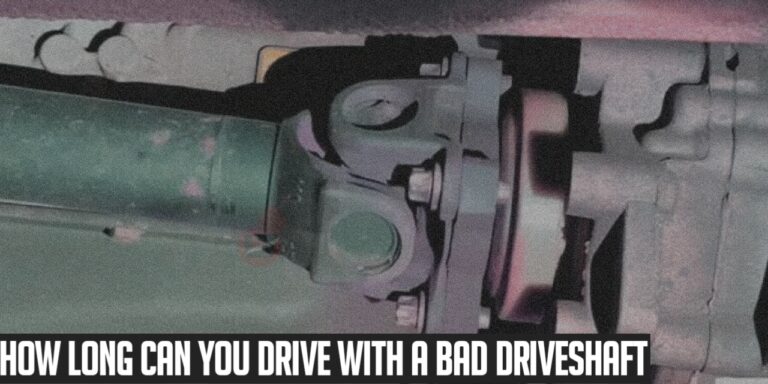The Drive Shaft is a crucial component of your car’s drivetrain that transmits power from your engine to your wheels.
When the shaft goes bad, it is often accompanied by reduced performance, unusual vibrations, clunking noise when switching gears, and difficulty turning the steering before it finally gets damaged.
However, some car owners may want to know how long they can keep driving with a bad drive shaft before taking it for repairs.
In this article, we’ll explore the symptoms of a bad drive shaft and the effect of driving with one.
What is a Drive Shaft?
The driveshaft is a rotating, tube-like component that connects the transmission to the differential, transmitting torque from the engine to the wheels. It is commonly found in rear-wheel drive and four-wheel drive vehicles.
In simpler terms, the driveshaft transfers power from the engine to the wheels, enabling your vehicle to move.
Symptoms of a Bad Driveshaft
There are a few symptoms associated with a faulty driveshaft, and they are:
- Vibrations
- Clunking noises
- Uneven Tire Wear
- Difficulty in Handling Steering
- Loss of Power
Vibrations
You may notice excessive vibrations, especially when driving at a higher speed. This often implies that there’s a misalignment in the driveshaft.
Clunking Noises
If you notice clunky noise when shifting between gears, you should have your driveshaft checked. Also, you may hear knocking sounds from underneath the vehicle while driving at high speed.
Uneven tire wears
If you continue driving on a faulty driveshaft, the force may exert on the tires, causing faster wear-outs and alignment issues.
Difficulty in Handling Steering
If your vehicle is becoming challenging to steer, the problem could be from your drive shaft.
Loss of Power to the Wheels
The main task of the driveshaft is to transfer power from the engine to the wheels; once it breaks, there’ll be a loss of control of the wheels. Your engine will start, but you can’t move the car.
How Long Can You Drive With a Bad Drive Shaft?
It’s not advised to drive with a faulty driveshaft because it may disappoint you when you need it the most.
Once you notice any of the above symptoms, it’s required that you take immediate action. However, most drivers ignore these signs and proceed to drive on the highway.
Doing this is high-risk because I’ve seen a case where someone was driving at full speed with a lousy driveshaft, and the shaft broke and hit a passerby. Luckily, it only grazed him.
Aside from this, if the drive shaft fails on the highway, you’ll be stranded on the road, and the car will also require a towing truck service.
Also, a bad drive shaft may cause damage to components such as the transmission, differential, or bearings. This can lead to costly repairs or even the need for a complete system change.
Given the dangers that could result from a damaged driveshaft, it’s critical to fix the issue immediately. Depending on the severity of the problem, you may be able to drive for a specific amount of time with a damaged driveshaft. Still, it is typically advised that you stop moving as soon as any warning signs appear.
FAQs
As an Amazon Service LLC Program Associate, V. Auto Basics earns from qualifying purchases. See Our Affiliate disclaimer.
